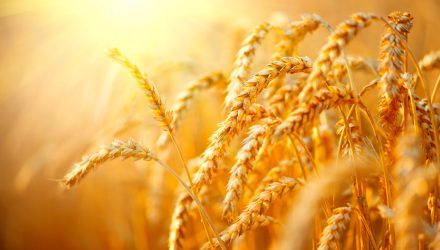Further upside in agricultural commodities will hinge on more heavy rains and harsh storms in Brazil as well as other parts of the world. If that’s the case, investors may want to get ahead of the move higher with exposure to ag commodity funds from Teucrium.
As reported by Brownfield, storms in the central and southern U.S. Plains could be hurting the outlook for winter wheat. Additionally, heavy rains in the northern Plains and in Canada could further delay planting for the rest of the spring season. Given the expectations of lesser supply, investors will want to consider exposure to the Teucrium Wheat Fund (WEAT). The fund provides investors with an easy way to gain exposure to the price of wheat futures.
The Brownfield report also mentioned heavy rains causing delayed harvests and crop damage in Brazil. This could have a profound effect on supplies for soybeans and corn. That said, investors should look at the Teucrium Corn Fund (CORN), which tracks three futures contracts for corn that are traded on the Chicago Board of Trade. They could also look to the Teucrium Soybean Fund (SOYB), which focuses on soybean futures contracts.
All three funds offer short-term traders or longer-term buy-and-hold investors with easy ingress to the aforementioned commodities. For investors who are unsure of which commodities to invest in, there’s also a broad-based option.
Commodities Exposure in One Fund
An all-encompassing option for upside in ag commodities is the Teucrium Agricultural Fund (TAGS). It uses a fund-of-funds structure, incorporating the three aforementioned WEAT, CORN, and SOYB as well as adding exposure to sugar via the Teucrium Sugar Fund (CANE).
As mentioned, long- and short-term investors can benefit from ag commodities, or TAGS in particular. For the former, investors can diversify their portfolios with assets that are uncorrelated with the broad market. That said, TAGS offers a perfect complement to a traditional 60/40 stock/bond portfolio in the convenience of one dynamic ETF.
Short-term traders can also use TAGS to play the volatility of ag commodity prices. As opposed to holding various futures positions in a variety of commodities, TAGS can capture this broad exposure via one fund, thereby reducing the costs of holding more than one position.
Furthermore, TAGS presents itself as a compelling option given its low 0.13% expense ratio. That makes it an ideal option for cost-conscious investors, especially in the current macroeconomic environment.
For more news, information, and analysis, visit the Commodities Channel.

